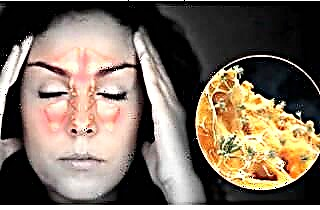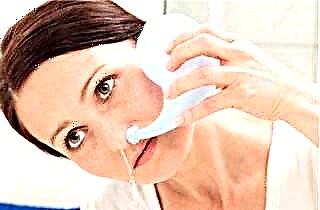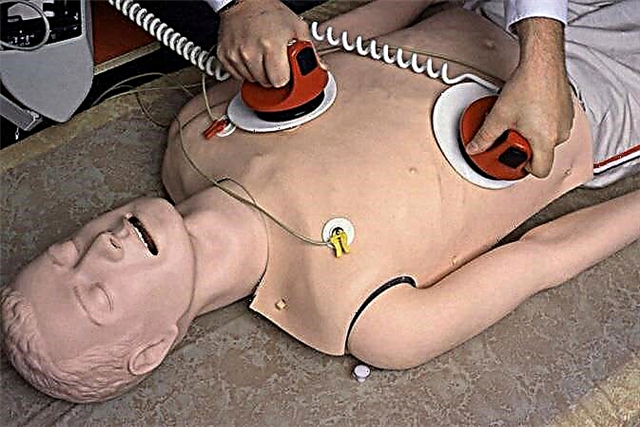The cyst of the frontal sinus is a pathological spherical neoplasm. It affects the frontal sinus (paranasal sinuses) and consists of several elements - the outer, inner walls, and fluid. As for the liquid, it can be sterile (in this case, we are talking about mucocele of the frontal sinus) or bacteriological, that is, purulent (pyocele). The characteristic features of the fluid are determined by the key cause of the pathology and its limitation period. As a rule, such an ailment affects people of both sexes between the ages of ten and twenty.
The causes of the disease and the mechanism of cyst formation
Mucocele of the frontal sinus (right or left) is a dangerous disease, in the absence of proper treatment, it leads to the formation of a fistula. Through the hole, the cyst fluid enters the nearby organs, primarily the organs of vision. As a result of this, a number of severe complications may appear:
 panophthalmitis;
panophthalmitis;- encephalitis;
- endophthalmitis;
- phlegmon of the eye socket and so on.
The frontal sinus is tightly covered with special tissue with glands. They produce a special secret to permanently moisturize the nasal cavity, and also protect the body from pathogenic bacteria. Each gland has its own natural drainage channel. With frequent diseases of the nose, thickening of the walls of the mucous membrane occurs, as a result of which an obstruction is formed (blockage of the glandular ducts).
It is this factor that is key for the formation of a cyst, because after the channels are blocked, mucus production continues, and the walls of the membranes stretch. It should be noted that such pathologies of the nasal cavity are not such a rare occurrence.
At the same time, most cases of the appearance of cysts are recorded in the frontal region. This is not difficult to explain by the fact that it is the forehead that is more often than other areas exposed to all kinds of influences and injuries.
In addition, do not forget about the great length and entanglement of the frontal-nasal canal. In addition to neutral and purulent fluid, other types of fluids and voids can form within the cyst. We are talking about serous secretions (hydrocele), as well as air accumulations (pneumocele). The latter option is rarely diagnosed.
Symptoms
The formation of a clear clinical picture is complicated by the fact that the cyst in the frontal sinus does not have pronounced symptoms. Often, it is just random circumstances that make it possible to identify such a pathology. Therefore, it often happens that patients live with such a neoplasm for decades without suspecting anything. However, the characteristic manifestations of mucocele of the frontal sinus are still present:
 recurrent headaches;
recurrent headaches;- frontitis;
- discomfort with a sharp drop in pressure;
- violation of respiratory function;
- pain over the eye socket.
If we talk about the final stage of cyst development, then it is accompanied by the appearance of a spherical formation (it can be detected by feeling the frontal sinus). Even light pressure will cause severe pain and uncharacteristic crackling or crunching sounds. In some cases (with too much pressure), a fistula appears on the formation. Through it, the contents of the cyst come out. Another noticeable symptom is the downward displacement of a part of the frontal sinus (for this reason, the eye can change its position or crawl out a little under pressure).
Mucocele of the frontal sinus is often accompanied by such a visual defect as a split in the visible image. In addition, some patients have impaired color perception and reduced visual acuity (quality). Another possible symptom is persistent watery eyes.
A few words about diagnostics
Now we know that mucocele of the frontal sinus may not manifest itself in any way for many years and be asymptomatic. Therefore, the diagnosis of such a pathology is based not only on the patient's complaints. An x-ray is most often used to detect a neoplasm. If vision defects appear, and its quality has noticeably decreased, it is necessary to consult an ophthalmologist. If meningitis is suspected, you should definitely see a neurologist.
 Computed tomography provides higher diagnostic accuracy than X-ray examination. Additional diagnostic methods are:
Computed tomography provides higher diagnostic accuracy than X-ray examination. Additional diagnostic methods are:
- MRI;
- Ultrasound;
- analysis of the quality of vision (acuity, color perception);
- diagnostic puncture;
- diaphanoscopy.
If the cyst occupies no more than one third of the available volume of the frontal sinus, then the radiograph may not detect it... Therefore, some doctors prefer to immediately use computed tomography, as well as magnetic resonance imaging.
Another additional diagnostic method (prescribed by the otolaryngologist) is probing the frontal sinuses using a special probe. Thus, you can find out about the degree of patency of the frontal-nasal canal. If we talk about differential diagnosis, then it is carried out when a tumor, dermoid cyst or frontal sinusitis is detected.
Treatment
Conservative treatment is prescribed for early detection of a pathological formation. It involves removing accumulated mucus from the cyst. In addition, the otolaryngologist opens the blocked channels, relieves inflammation and swelling, and flushes the affected cavity.
There are a number of medications that are prescribed to patients to dilute the contents of the inflamed cavity. After that, a special agent is injected into it to open the sinus and remove its contents. In some cases, artificial disclosure can be dispensed with, since cysts often open on their own in patients. If fluid leaves through the nasal openings, this does not mean at all that the neoplasm is over. Over time, the cyst fills with mucus again.
Additionally, it is necessary to say about the means from the arsenal of traditional medicine. They do not eliminate the neoplasm, but they help get rid of the symptoms of the disease.
- If the patient has severe headaches, you can use this recipe. Juice is extracted from the radish and instilled into the nose. Besides,
 small gauze swabs (turundas) can be soaked in them and placed in both nostrils.
small gauze swabs (turundas) can be soaked in them and placed in both nostrils. - Discomfort is effectively eliminated by inhalation. Brew chamomile flowers before inhalation therapy. Next, add three to four drops of eucalyptus essential oil to the resulting broth. The inhalation procedure in this case is simple: breathe through your nose over the steam for 3-5 minutes. If chamomile is not available, use bay leaves instead (they have a similar effect).
- Nasal rinses, which should be done regularly, are helpful. For this purpose, chamomile broth is again required. The main advantage of this plant is its incredibly strong antimicrobial and antiseptic effect. But if you wish, you can easily replace chamomile with chlorophyllipt solution (it is also actively used in the therapy of ENT organs). To rinse the nose, dilute a tablespoon of the medicine with 500 grams of water.
- Do not forget that warming up (dry compresses) has a healing effect on the body. You can heat regular salt in a skillet. After that, place it in a pouch or clean sock, apply to the affected frontal sinus. The duration of the procedure should not exceed 30 minutes.
- To get rid of pain, we advise you to apply an ordinary warm chicken egg to the frontal area.To do this, boil it, wrap it in a light transparent cloth (you can use gauze) and apply until the egg is completely cool.
But in order to cope with a cyst once and for all, drug therapy and treatment with folk remedies is not enough. Surgery is required. Previously, with such a pathology of the frontal sinuses, surgery could only offer a frontotomy. But this operation was too dangerous, since the removal of the cyst was done in an open way. And the rehabilitation period after surgery lasted quite a long time.
Everything changed with the advent of non-invasive methods, when endoscopic equipment was used to eliminate cysts. This method does not imply open removal of the neoplasm in the frontal sinus. The cyst is accessed through the nasal openings and natural sinus canals.
Do not forget that it is always easier to prevent any ailment than to treat it later. Therefore, we advise timely and correct elimination of nasal diseases and seasonal colds. Remember to increase immunity - eat regularly and balanced, take contrast showers and baths, move more and walk in the fresh air.

 panophthalmitis;
panophthalmitis; recurrent headaches;
recurrent headaches; small gauze swabs (turundas) can be soaked in them and placed in both nostrils.
small gauze swabs (turundas) can be soaked in them and placed in both nostrils.

